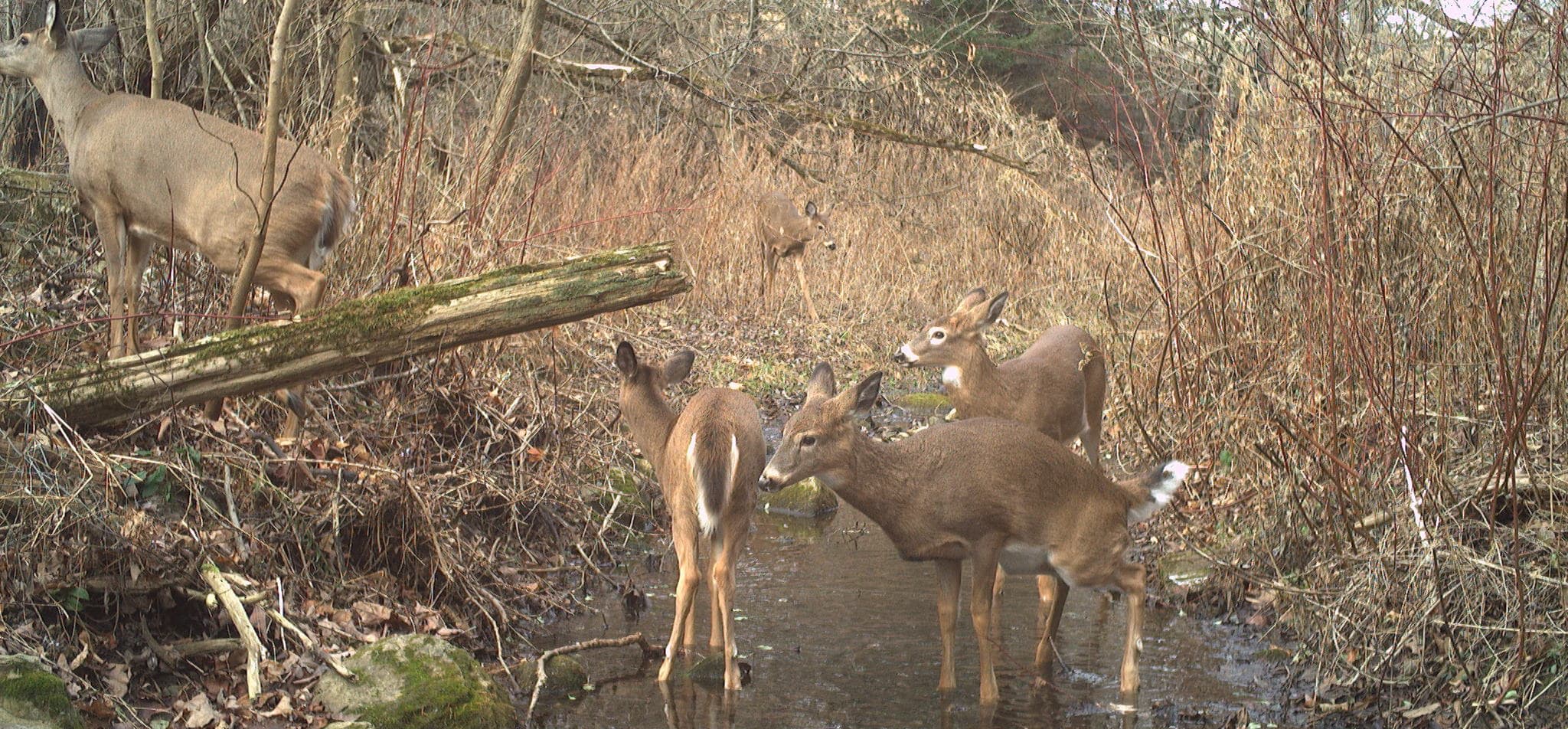Share
Protecting the region’s wildlife while building transit
We’re working with conservation authorities and communities to keep animal habitats safe.
Apr 3, 2025
We all know taking transit is a great way to help the environment.
In fact, taking a GO train instead of driving reduces your carbon footprint by 90 per cent. And as we work to bring even more transit to the region, we’re also taking steps to preserve ecosystems and protect Ontario’s endangered species.
From bat boxes to bird habitats and wildlife highways, let’s dig into how we’re keeping the region’s fauna flourishing.
A busy highway for wildlife
Our region is home to an amazing abundance of charming creatures. Even in densely populated cities, it’s not uncommon to see critters like raccoons, possums and ducks on a daily basis. But if you know where to look, there are some even cooler animals to spot.
In Durham region, we setup a motion capture camera at the mouth of a culvert that runs under the train tracks and were surprised at all the traffic on this wildlife highway!
In collaboration with Indigenous communities, we are learning how to better support wildlife movement around our tracks. With their guidance, we observed more than 30 bird and mammal species over an 11-month period – including turkeys, coyotes, muskrats and otters.
Safe nesting site for Chimney Swifts
While not the most popular Swift in the world (we see you, Taylor), Chimney Swifts are acrobatic birds that play a key role in keeping the insect population in check.
They’re also a threatened species in Ontario and, as their name suggests, depend on human-made structures like chimneys for their homes. That’s because like all swifts, these birds can only perch on vertical surfaces like the inside of chimneys. On top of unique habitat needs, swifts mate for life, just like swans and bald eagles.
Chimney Swifts only perch on vertical surfaces like the inside of chimneys. (Wikimedia Commons)
Because this threatened species is commonly found in cities, we are taking extra precautions to protect their habitats when building new transit projects. In Hamilton, where we’re building a new light rail transit line, we conducted a species-at-risk study on properties along the future transit route and discovered a potential Chimney Swift habitat. While the original chimney needs to be removed to build the line, we are building a new one which will remain in place for three to five years – providing a safe habitat for local Chimney Swift populations – and be monitored seasonally for signs of any new residents.
We are also keeping the existing chimney in place for one breeding bird season before removing it, to give any resident birds time to transition into the new habitat.
New boxes for bats
Chimney Swifts aren’t the only winged creatures with a new roof over their heads. We’ve partnered with Toronto and Region Conservation Authority (TRCA) to try to help endangered bat species in Ontario
We're installing bat boxes across the region, including more this spring.
We’re constructing 150 structures known as bat boxes across the Greater Toronto and Hamilton Region. These structures provide a temporary habitat for bats to breed and raise their young.
Our teams have already installed bat boxes at a number of parks including E.T. Seton Park, Fergy Brown Park and The Don River Valley Park. And we are installing several more this spring at several locations in Etobicoke, including in Deane, Silvercreek and Eden Valley parks as part of the Eglinton Crosstown West Extension project.
Ontario is home to eight different species of bats. (Metrolinx photo)
If you do come across a bat box as you walk through nature, TRCA recommends keeping your distance If bats are using the structures, they’ll be visible at dusk.
Ontario is home to eight different species of bats. Those include the little brown bat, the eastern red bat, the silver-haired bat, the tricoloured bat and more.
Our commitment to expanding transit goes hand in hand with protecting the region’s diverse wildlife. From building safe passageways for animals to creating habitats for threatened species like Chimney Swifts and bats, we’re taking meaningful steps to support Ontario’s ecosystems.
by Scott Money Metrolinx editorial content manager
